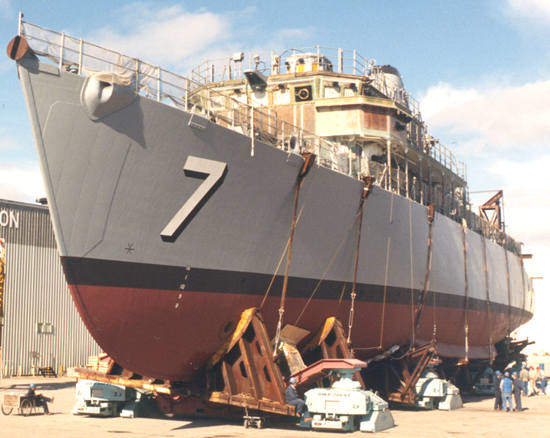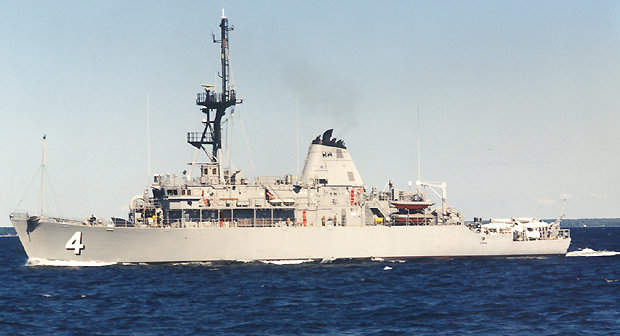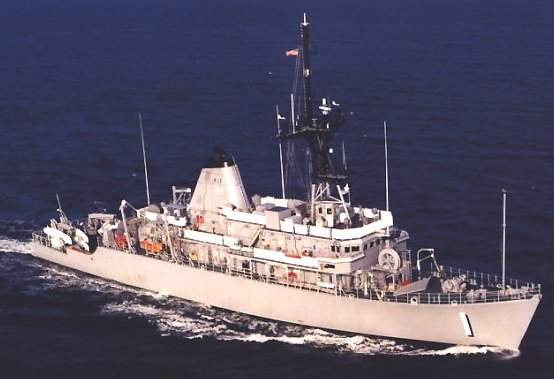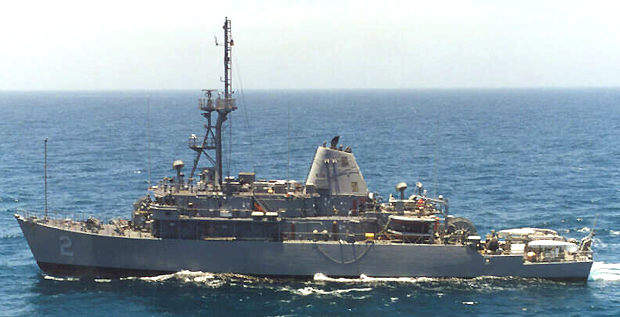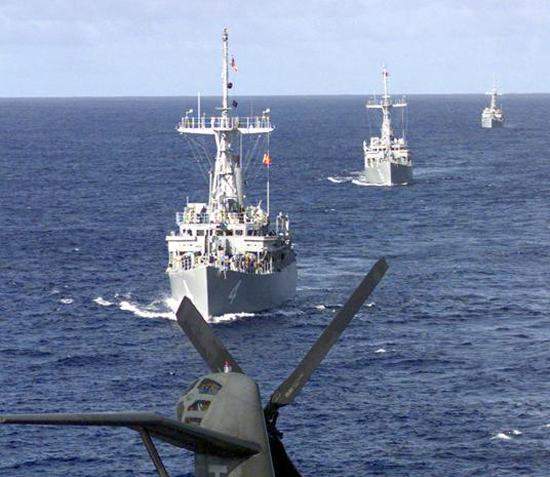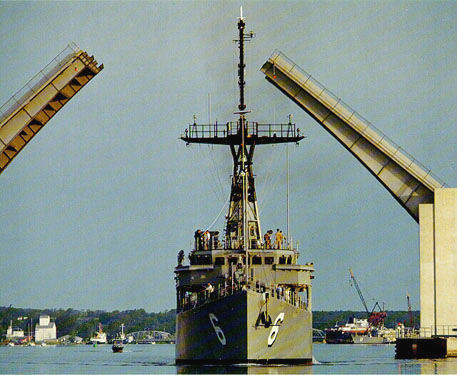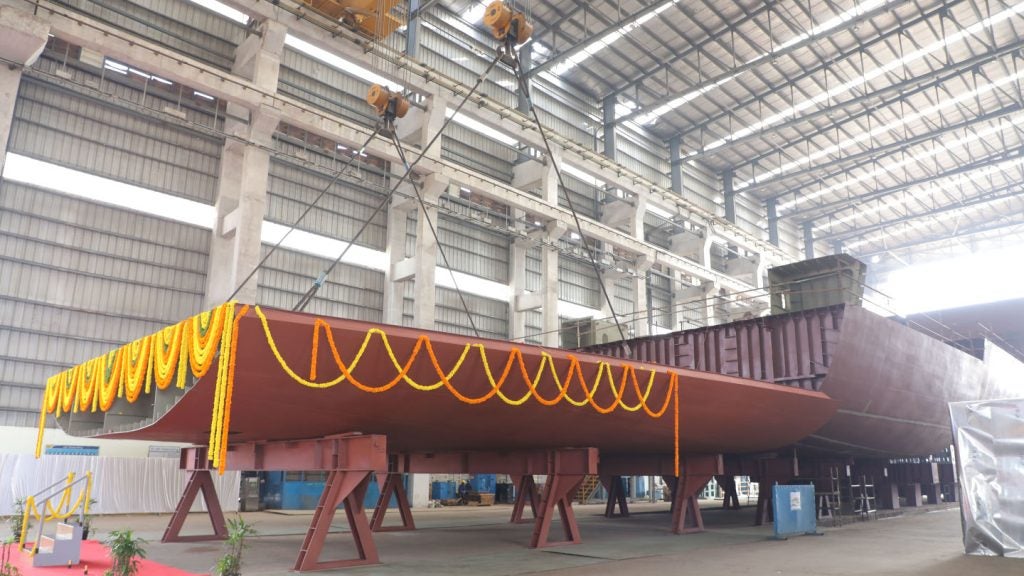14 Avenger mine countermeasures vessels were commissioned between 1987 and 1994 and are in service with the US Navy. The vessels were built by Marinette Marine Corporation, based in Marinette, Wisconsin, and Peterson Ship Builders, also of Wisconsin. Each ship accommodates a crew of 80 with eight officers.
This first-of-class vessel was successfully deployed in the Persian Gulf during Operation Desert Storm in 1991. Ardent (MCM 12) and Dextrous (MCM 13) are stationed in Manama, Bahrain. Guardian (MCM 5) and Patriot (MCM 7) are stationed at the Maritime Self-Defence Force Sasebo Naval Base in Japan. Devastator (MCM 6), Scout (MCM 8), Pioneer (MCM 9), Warrior (MCM 10) and Chief (MCM 14) are based at Ingleside in Texas. Four vessels (MCM1 to MCM4), Avenger, Defender, Sentry and Champion have been transferred to the Naval Reserve Force.
Avenger class hull design
The hull is constructed of wood with an external coat of fibreglass. Oak, Douglas Fir and Alaskan Cedar woods were selected for the hull because of their flexibility and strength combined with low weight. This allows the craft to withstand the blast from naval mines and also gives it a low magnetic signature.
Command, control and navigation
The ship’s integrated command, control and navigation system is the Nautis-M supplied by BAE Systems Insyte (formerly Alenia Marconi Systems). Nautis is used in mission planning, route surveying, minehunting, classification of detected targets, mine disposal and mission status reporting.
The ship is compatible with the Joint Maritime Command Information System (JMCIS) which provides Allied Commanders with a powerful command, control and information C2I system and locates friendly and hostile forces.
The ship’s communications suite includes an SRR-1 satellite communications system and a WSC-3 UHF communications system.
Mine countermeasures suite
The Avenger’s mine disposal systems include the ATK (Alliant Techsystems) SLQ-48 remotely operated mine disposal system and the EX116 mod 0 remotely operated vehicle (ROV) mine neutralisation system supplied by ATK and Raytheon.
The SLQ-48 carries out detection, location, classification and neutralisation of moored mines and mines resting on the seabed. The vehicle uses high-frequency, high-resolution sonar, low-light-level television, cable cutters and charges to dispose of mines. The SLQ-48 vehicle is tethered to the Avenger vessel by a 1,070m cable and is controlled by the vessel.
The ATK / Raytheon ROV has a slightly longer 1,500m tether cable and also carries cable cutters for dealing with tethered or moored mines and explosive charges to neutralise the mines.
In March 2008, BAE Systems Insyste was awarded a contract to supply the Archerfish single-shot mine disposal system for the Avenger vessels. The Archerfish unmanned underwater vehicle (UUV) forms part of the US Navy’s common neutraliser programme for use on surface ships, helicopters and fast rigid inflatable boats (RIBs).
Sensor suite
The first nine ships were originally fitted with the General Electric AN/SQQ-33 sonar but these were replaced with the AN/SQQ-32 advanced minehunting and classification sonar from Raytheon and Thales Underwater Systems (formerly Thomson Marconi Sonar), also installed in the last three Avenger class vessels (MCM 10 to MCM 12).
SLQ-48."
The system has two sonars fitted in a small pod-shaped submersible vessel which is towed by the ship. The submersible is housed in a trunk below the deck of the ship just forward of the bridge.
The sonars are a Raytheon search and detection sonar and a Thales Underwater Systems high-resolution sonar operating at high frequency for target classification.
The deployment and retrieval system, designed by the Charles Stark Draper Laboratory in Massachusetts includes the tow cable and winch.
The Avenger class is fitted with the AN/SPS-55 I/J-band surface search and navigation radar supplied by Cardion, Inc. of New York. The ships were equipped with CMC Electronics (formerly Canadian Marconi Company) LN66 or Raytheon AN/SPS-66 navigation radars, but these were later replaced by the AN/SPS-73.
Propulsion systems
The ships are equipped with four ID 36SS6V diesel engines supplied by Isotta Fraschini of Milan, Italy. The engines, which have very low magnetic and acoustic signatures, develop 1.76MW sustained power giving a cruising speed of 14kt. For station keeping the ship uses two Hansome Electric motors rated at 294kW. An Omnithruster Hydrojet, rated at 257kW, provides precise manoeuvring.

